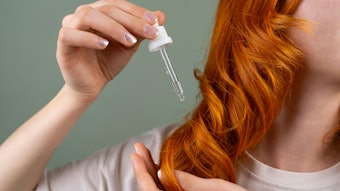Silkiness, long-lasting smoothness and moisturizing are expected in bath and body products. The bath has become a haven for stress relief and a sanctuary for those who seek restorative treatment in addition to a cleansing benefit, and ingredient suppliers and formulators provide a variety of product enhancements to satisfy demand in the market.
In addition, skin care remains a major thrust of the bath and body market, and body washes, scrubs, emollient lotions and bath milk have become increasingly multifaceted. Popular collections feature ingredients that sooth and moisturize in addition to cleansing.
According to Bradford Soap Works, Inc.’s Chris Buckley, executive vice president, and Ed George, vice president of technical services, creative additives and delivery systems that utilize new technology are the current trend. “It’s the custom connection in the creation of soaps that provides SPF, super moisturization, anti-acne, antioxidant and rejuvenating characteristics,” said George.
Bath treatments that deliver superior moisturizing benefits and leverage the synergy of nature and innovative formulation are evident in today’s market. Consumer research shows that baby boomers who take good care of their bodies are seeking personal care products that can help them look as young as they feel, and ingredients today are helping formulators capitalize on this trend. For example, Hydrovance, a moisturizing agent introduced by National Starch Personal Care, is appropriate for use in body care formulations where both moisturization and aesthetic performance are required. The ingredient is said to diffuse into the stratum corneum—increasing skin hydration, alleviating clinical signs of dryness and increasing skin elasticity with an aesthetically pleasing after-feel. According to the company, studies on moisturization and skin elasticity have demonstrated the agent to have efficacy similar to glycerin. In addition, the company found that the formulation dries in nearly half the time of glycerin-containing formulations.
Marketers with an interest in offering body wash containing a high percentage of naturally occurring moisturizing ingredients in the formulation can count on vegetable-derived emollients, such as those made from isostearic acid. According to Rachel Lafferty, sales development associate at Uniqema, the company’s Prisorine series are all vegetable-derived liquid ingredients that support the important feel of formulations as well as effects such as solubilization, substantivity and moisturization. Uniqema’s Monasil PCA is a combination of silicone and pyrrolidone carboxylic acid. “This ingredient can be used to provide a long-lasting, silky smooth feel not found with most other silicone fluids,” said Lafferty, noting that the product also provides a good deal of substantivity at low-use levels.
Beraca Ingredients’ recent launch of an açai oil-based ingredient also supports the trend of natural ingredients with benefit. Rain Forest RF4410 is, according to the company, an excellent source of essential fatty acids—linoleic acid, Omega-6 and Omaga-10—and is combined easily in body butters, among other products.
Continued consumer interest in moisturizing benefits, advances in technology and new sources of natural ingredients ensure a silky and smooth future for the bath and body market.
Growth of the Market
The bath and body category has extended its reach from clean and practical to the skin care treatment arena. According to Euromonitor, value sales of bath and shower products grew by 1% in 2005 after four years of declines. Despite the maturity of the sector, manufacturers were able to grow sales through new product development. A Euromonitor report states: “In bath and shower products, manufacturers have faced intense pricing pressure from rival brands, and heightened competition has been apparent between retail distribution channels struggling to remain competitive with discount sellers.” Bath products now offer many value-added benefits, fortifying existing brand lines and generating consumer interest and demand. In addition, according to Euromonitor, value-added products command higher prices than traditional products, driving some value sales growth. The global market in 2005 for bath and shower products was more than $23 billion. This figure includes body wash, shower gel, bar soap, liquid soap, bath additives and talcum powder. High levels of product innovation and increased product segmentation by gender and age are expected to continue to increase, and value sales are forecast to grow by 17% throughout the 2005–2010 period, notes Euromonitor.
!['Snoopy and Woodstock are cherished [characters] across generations and pairing them with our most-loved body care essentials creates a collection that feels classic with a modern twist. This launch is about celebrating our community with something unforgettable while starting an exciting new era for the brand,' said Luis Garcia, Chief Marketing Officer.](https://img.gcimagazine.com/mindful/allured/workspaces/default/uploads/2025/10/tree-hut-peanuts-fullcollection-fall26-1x1-1253.lGcuurUszp.jpg?auto=format%2Ccompress&fit=crop&h=191&q=70&w=340)









